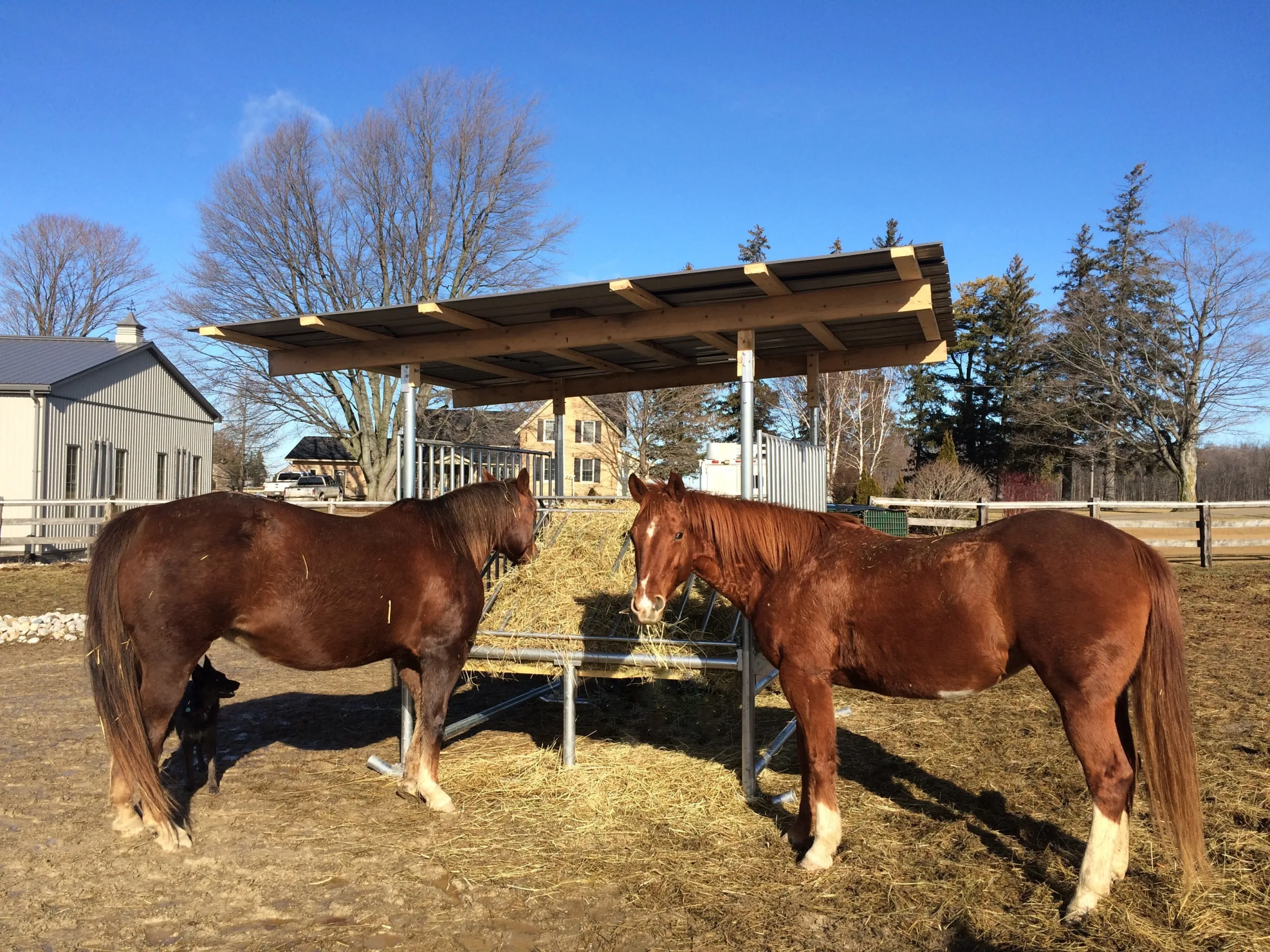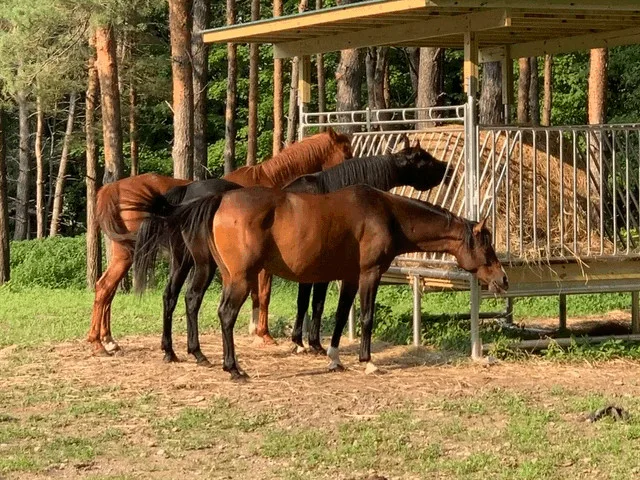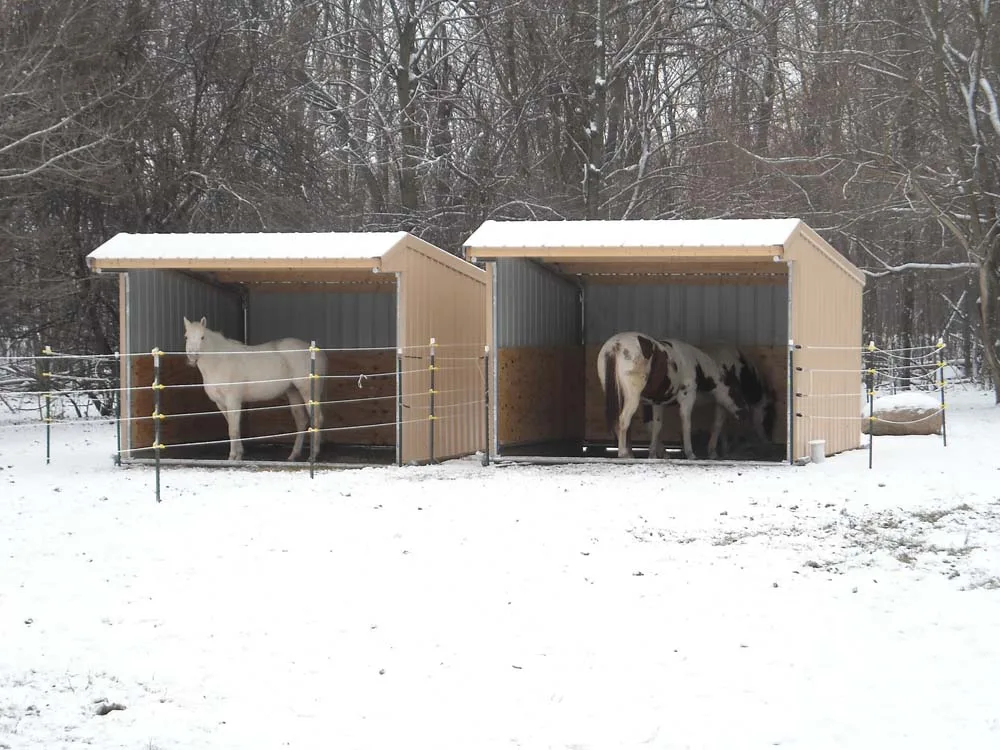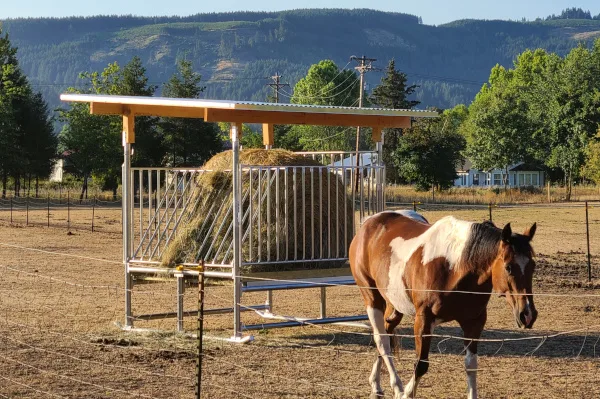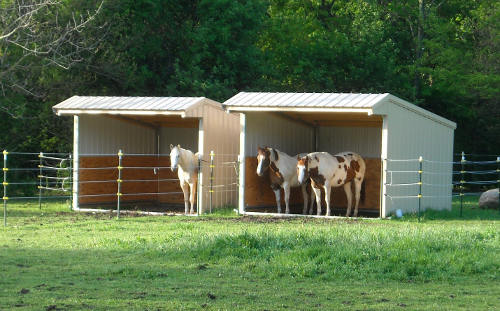Feeding horses hay might seem simple, but choosing the right amount and type is one of the most important decisions you can make for your horse’s health. Hay forms the foundation of every horse’s diet, providing essential fiber, energy, and nutrients that keep the digestive system working smoothly. This can be crucial for maintaining good health and preventing health problems, such as horse colic. How Much Hay Should a Horse Eat? As a rule of
Feeding your horses efficiently is essential for both horse health and your bottom line. If you’re tired of seeing hay trampled, wasted, or soiled, a hay saver feeder is a great solution. Designed to reduce hay waste and improve feeding conditions, hay saver feeders offer many benefits for horse owners. 1. Reduce Hay Waste by Up to 30% or More Traditional feeding can lead to significant hay loss as horses pull hay to the ground,
Does your horse seem more energetic when turned out in the colder months? It’s likely not for the reason you think. Many horse owners assume their horses run around kicking and bucking in the winter as a way to stay warm but this isn’t necessarily true. Staying Warm or Releasing Pent-up Energy? Horses tend to act frisky in the winter, not because it’s cold, but because they have pent-up energy they need to get out.
Since 2020, hay prices have been on a steady incline, reaching their highest levels in over a decade. Although the market has recently stabilized, the costs remain high. This rise in prices is due to several factors, including weather-related shortages, inflation, and fluctuating demand. With hay prices still near historic highs, maximizing every bale’s value is essential. Our “Hay Saver” Hay Feeders are designed to minimize hay waste, ensuring more of it is consumed by
The temperatures are rising, the sun’s out, and we don’t have to worry about the snow anymore. Spring and summer are on their way! Without proper preparation, warmer weather can lead to dehydration, lethargy, and added stress for your horse. As the weather continues to get nicer, here are some tips and reminders for getting your horse re-acclimated to the warmer temperatures. Take it Slow – Your horse just spent several months taking it easy
